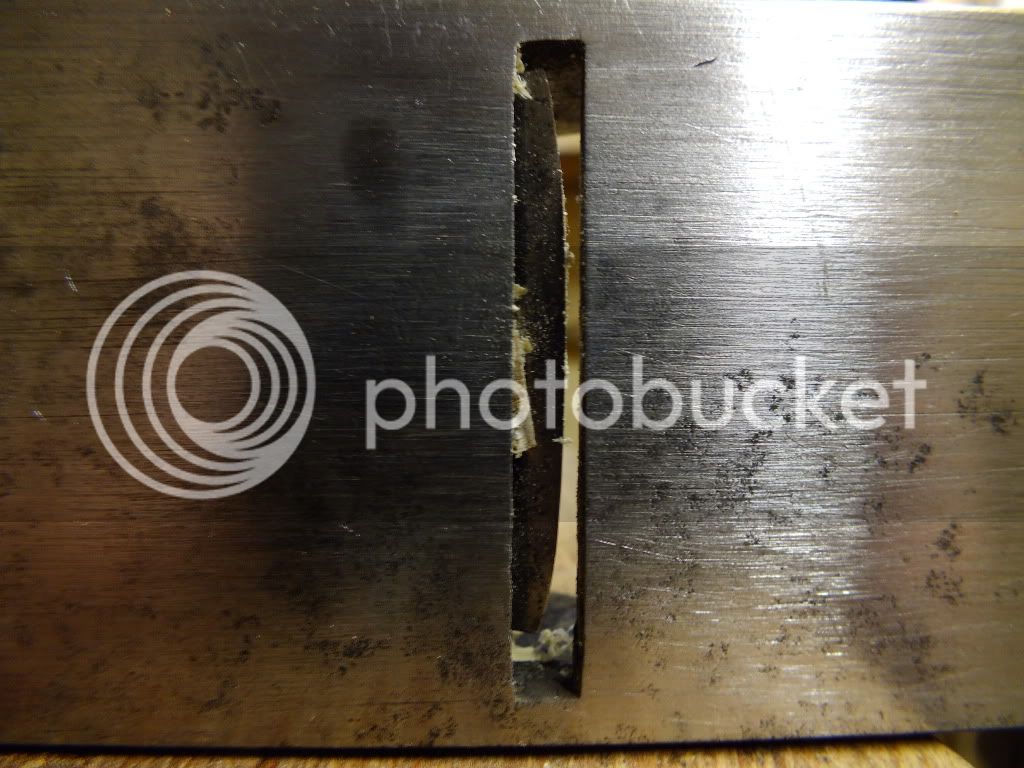sparkymarky
Established Member
it isn`t pretty and i`m not going to pretend it is, however today i finished a bu plane project with a £10 no4 chinese copy and a sorby blade.
total cost about £12 and 1 hour work.
work as follows-
- grind back lugs on base where frog sits.
- weld frog at 15 degree angle on base.
- cut back cap iron & blade.
- set handle further back on base (i screwed and glued it into position from underneath).
- grind & sharpen blade at required angle and sharpen.
- rebuild plane.
i`ve planed pine, ash and jarrah without altering blade results beneath. (narrow shavings due to how i ground the blade i might alter this in the future)



all in all for £12 i now have a lump of iron that has slightly more use than before. thought i would share it with you as some of our more refined tool builders may find this interesting, downsides are obviously no lateral adjuster on blade and no mouth adjustment, all done by eye down ere in devon :mrgreen:
mark.
total cost about £12 and 1 hour work.
work as follows-
- grind back lugs on base where frog sits.
- weld frog at 15 degree angle on base.
- cut back cap iron & blade.
- set handle further back on base (i screwed and glued it into position from underneath).
- grind & sharpen blade at required angle and sharpen.
- rebuild plane.
i`ve planed pine, ash and jarrah without altering blade results beneath. (narrow shavings due to how i ground the blade i might alter this in the future)



all in all for £12 i now have a lump of iron that has slightly more use than before. thought i would share it with you as some of our more refined tool builders may find this interesting, downsides are obviously no lateral adjuster on blade and no mouth adjustment, all done by eye down ere in devon :mrgreen:
mark.









































